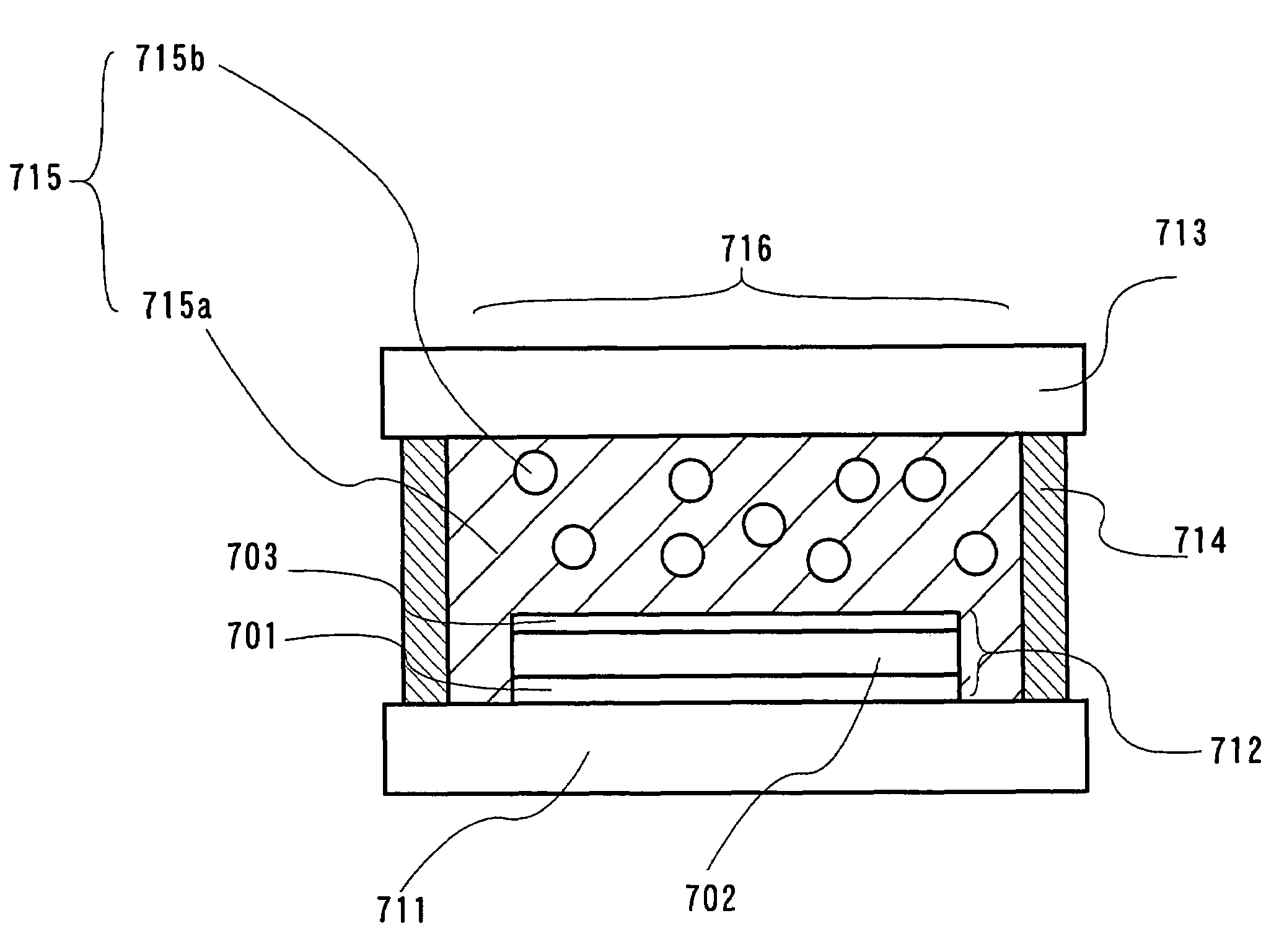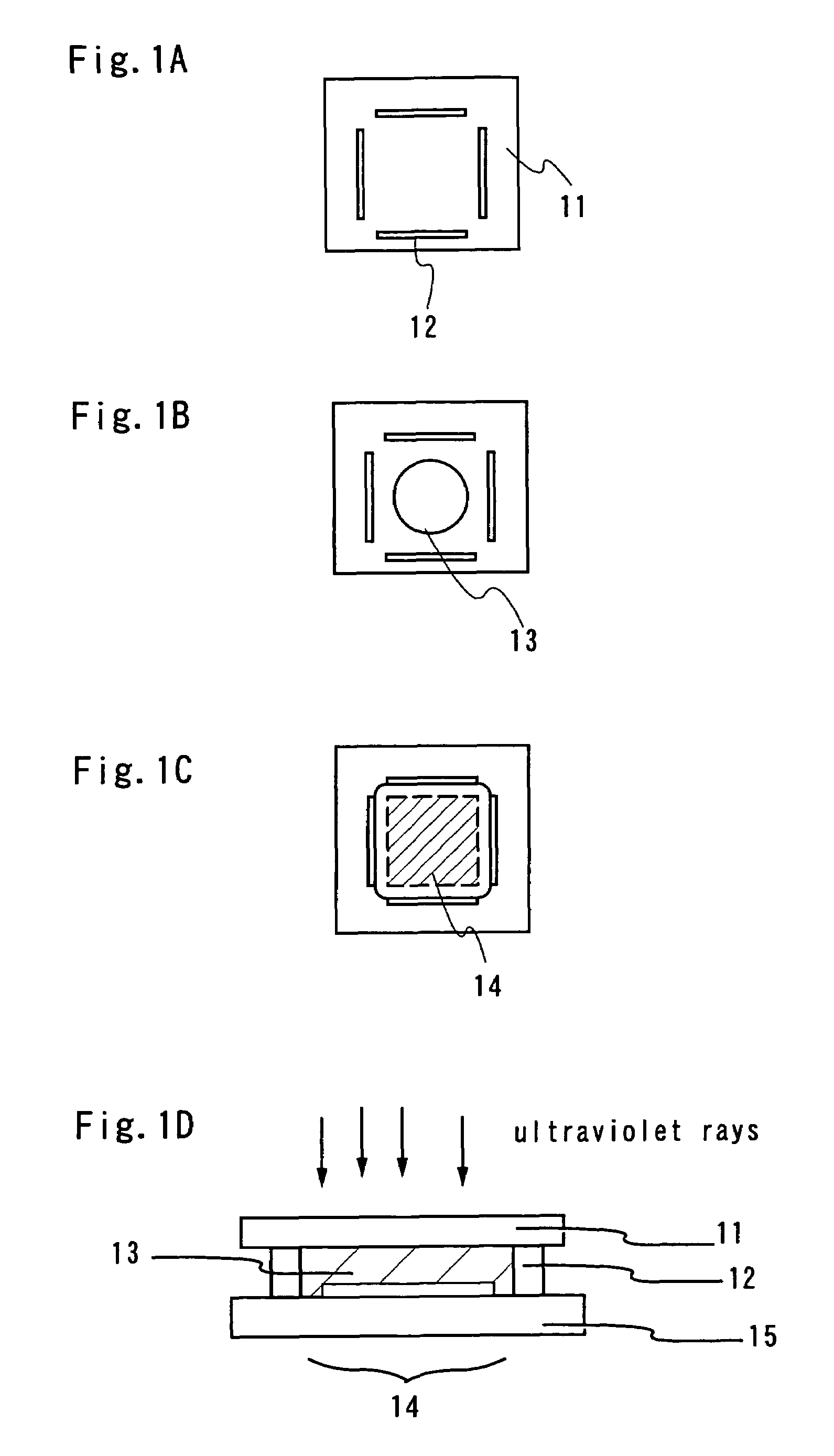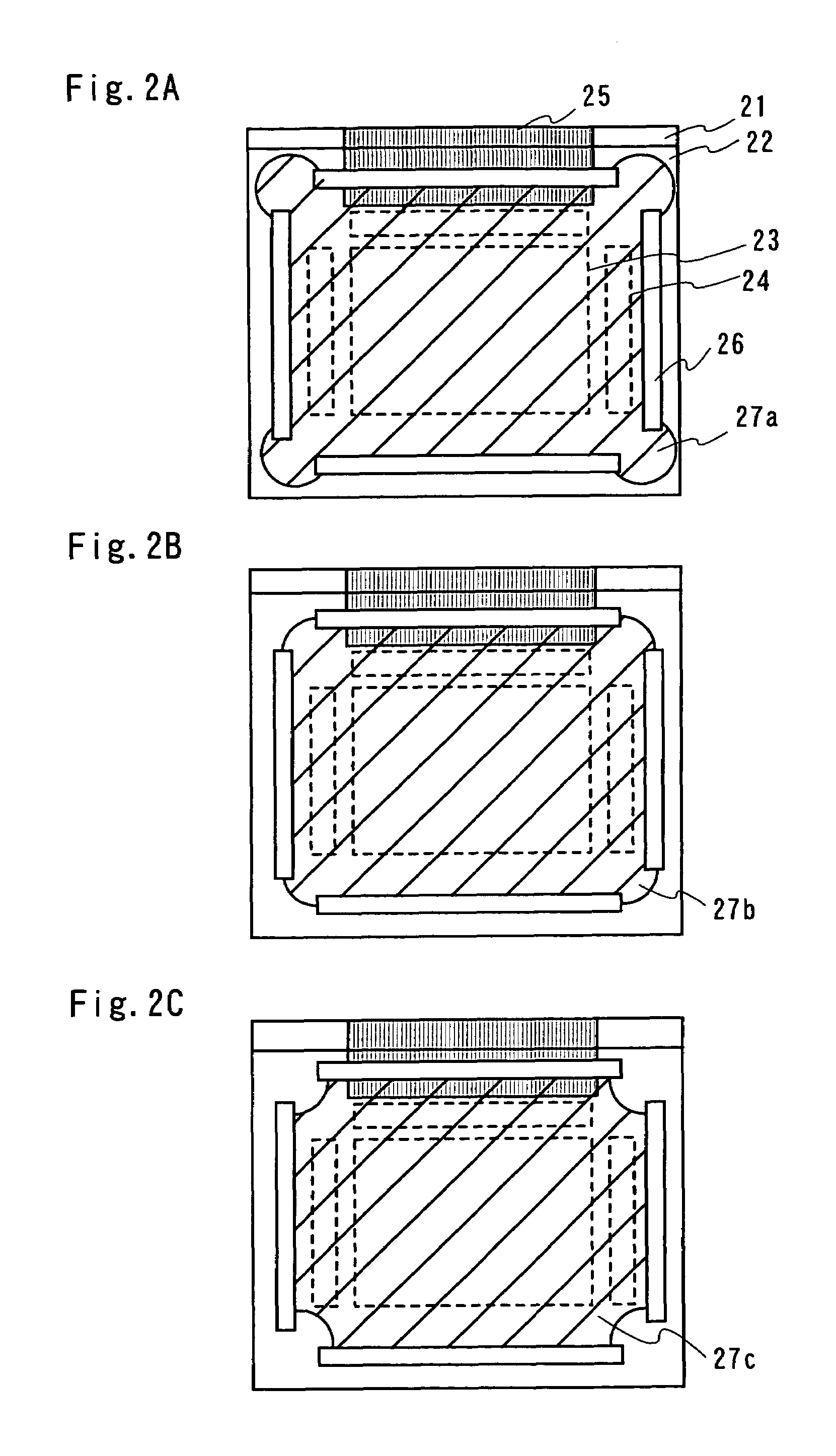Light emitting device having organic light-emitting element
a light-emitting element and light-emitting device technology, applied in the field of light-emitting devices, can solve the problems of reducing the illumination of the organic light-emitting element with time, and achieve the effects of preventing the degradation of the organic light-emitting element, preventing the penetration of moisture or oxygen, and enhancing the
- Summary
- Abstract
- Description
- Claims
- Application Information
AI Technical Summary
Benefits of technology
Problems solved by technology
Method used
Image
Examples
embodiment mode 1
[0035]First, a form of a light-emitting device according to the present invention will be described with reference to FIG. 7. FIG. 7 has a structure in which a substrate (first substrate) 711 that has an organic light-emitting element 712 provided and an opposed substrate with transparency (second substrate) 713 are bonded, where the organic light-emitting element 712 comprises a first electrode 701, an organic light-emitting layer 702, and a second electrode with transparency 703. In bonding the substrate 711 and the opposed substrate 713, a region of a pixel portion 716 is covered with a second sealing agent with transparency 715, and the periphery is surrounded by a first sealing agent (which has a higher viscosity than the second sealing) including a gap material (such as a filler a fine particle) keeping an distance between the substrates. In other words, the structure is sealed with the first sealing agent 714 and the second sealing agent 715. As a content of the second sealin...
embodiment mode 2
[0038]The second sealing agent according to the present invention (715 in FIG. 7) will be described.
[0039]The second sealing agent has an ultraviolet absorbent dispersed in an ultraviolet curable resin in order to prevent ultraviolet rays to be irradiated from arriving at an organic light-emitting element.
[0040]As a method for preventing ultraviolet rays from arriving at an organic light-emitting element, there is also a method of forming a film over an organic light-emitting element as a layer shielding ultraviolet rays. However, it is difficult that to evaporate an inorganic ultraviolet-absorbent material (such as zinc oxide) by resistance heating, and deposition with a high-energy power source is necessary. In addition, since a high-energy particle collides with a substrate during evaporation, a manufactured organic light-emitting element is damaged. Although an ultraviolet-absorbent material exists also in organic materials, there is concern about deterioration of the ultraviole...
embodiment mode 3
[0055]Here, a sealing process will be described with reference to FIG. 1.
[0056]First, with a dispenser system, a first sealing agent 12 is formed in a prescribed position on a second substrate 11 in an atmosphere of inert gas (FIG. 1(A)). As the translucent first sealing agent 12, one that includes a filler (diameter: 6 μm to 24 μm) and has a viscosity of 370 Pa·s is used. Further, the first sealing agent 12 can be formed by printing since the first sealing agent 12 has a simple sealing pattern.
[0057]Next, a second sealing agent 13 is dropped in a region surrounded by the first sealing agent 12 (however, four corners are openings). (FIG. 1(B))
[0058]Next, a first substrate 15 that has a pixel portion 14 provided and the second substrate 11 that has the sealing agents (the first sealing agent 12 and the second sealing agent 13) provided are bonded (FIG. 1(C)). It is preferable that annealing is performed in vacuum to perform degassing just before the pair of substrates are bonded with...
PUM
 Login to View More
Login to View More Abstract
Description
Claims
Application Information
 Login to View More
Login to View More - R&D
- Intellectual Property
- Life Sciences
- Materials
- Tech Scout
- Unparalleled Data Quality
- Higher Quality Content
- 60% Fewer Hallucinations
Browse by: Latest US Patents, China's latest patents, Technical Efficacy Thesaurus, Application Domain, Technology Topic, Popular Technical Reports.
© 2025 PatSnap. All rights reserved.Legal|Privacy policy|Modern Slavery Act Transparency Statement|Sitemap|About US| Contact US: help@patsnap.com



